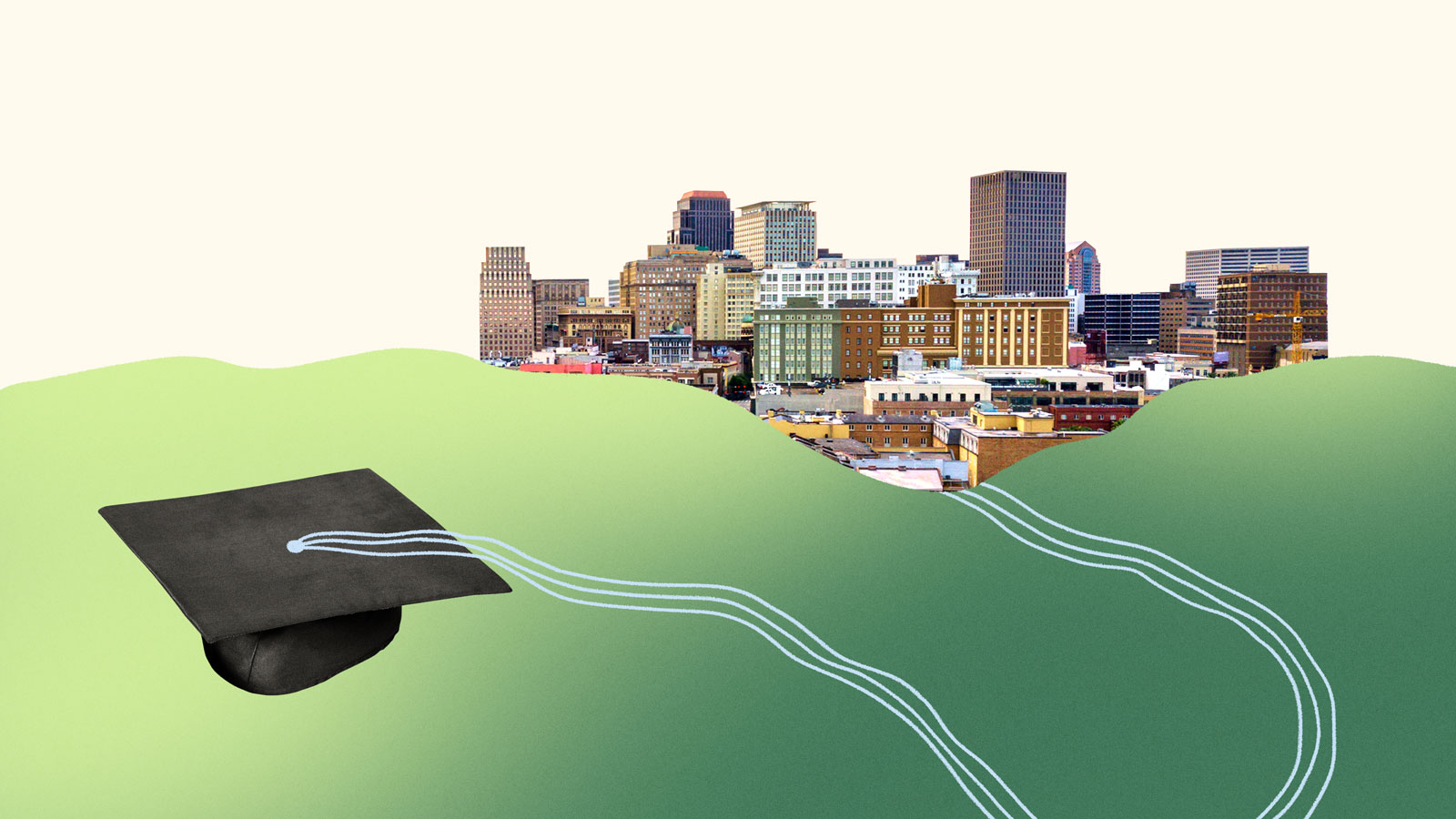This story is part of Fix’s Mentorship Issue exploring the unique ways climate leaders found their calling, and how new approaches to mentorship are upending old power structures. Check out the full issue here.
Before she was a towering figure in the environmental justice movement, Beverly Wright, who has a doctorate in sociology, was an associate professor at Wake Forest University. While on sabbatical in her hometown of New Orleans in 1992, she was asked by a group of environmental justice advocates to lead a program at Xavier University of Louisiana that would bring academics and communities together to solve problems.
Wright was familiar with organizations like that. She’d seen researchers parachute into communities, extract data and expertise, and leave when the funding ran out. The people left behind received little benefit from the partnership, while the grad students and professors earned degrees, received tenure, or landed book deals. She found such relationships “repulsive and immoral.”
If she were going to take the job, Wright would forge a new path. “This center should deal with community priorities,” she remembers thinking. “It shouldn’t be driven by university professors.”
Nearly 30 years later, the approach Wright calls “communiversity” remains a core tenet of the Deep South Center for Environmental Justice, a nonprofit striving to bring environmental justice to the Gulf Coast. This innovative method makes academic institutions and communities equal partners in shaping solutions to environmental racism and other injustices. That teamwork often leads to more insightful and effective outcomes by emphasizing the needs of those living with pollution, climate vulnerability, and other ills.
“Developing this approach that we call communiversity led to many, many successes and unbelievable trust among communities,” Wright says. “It helped to grow the environmental justice movement, being the backbone for research and support that was needed to make policy changes.”
Beyond using the model to understand and address the challenges facing those living on the front lines of climate change and environmental racism, the center leverages the model to provide community education and training and to help universities develop student curricula. Since its founding in 1992, the nonprofit has worked alongside hundreds of organizations, academics, scientists, and government agencies.
Despite the communiversity model’s success helping communities advocate for their needs and shaping state and federal policies that affect frontline communities, the approach remains an anomaly beyond the Gulf Coast. Wright hopes the book she is writing about it will introduce the innovative approach to a wider audience.
Wright traces the origins of the center and communiversity collaboration — two things she considers inextricable — to a research symposium on race and pollution led by Bunyan Bryant and Paul Mohai at the University of Michigan in 1990. That groundbreaking conference prompted a group of academic researchers to ask the Environmental Protection Agency to analyze the siting patterns and health impacts of landfills. The request included a suggestion that the agency develop a network of community-based organizations to work with historically Black colleges and universities and other schools studying and advancing environmental justice.
Within a few years, officials at the Louisiana Department of Environmental Quality embraced the idea. After some back-and-forth over where it would be established, Xavier University of Louisiana became the home of the Deep South Center for Environmental Justice in 1992.
Almost immediately, Wright made the communiversity model a centerpiece of the Mississippi River Avatar Board, an EPA-funded community coalition that spent several years working with university researchers, local authorities, and residents. One of the collaboration’s efforts involved moving some residents of Norco, a town west of New Orleans, away from a chemical plant and an oil refinery. The effort won a key victory in 2002 when the Shell chemical plant agreed to a relocation offer that made it possible to do just that. The company also committed to reducing toxic emissions at its local facilities.
Then, as now, the communiversity approach gave stakeholders an active role and a sense of agency in understanding and addressing a problem, rather than making them subjects to be studied, says David Padgett, a Tennessee State University geographer who often provides geospatial mapping expertise to Wright’s team and other community organizations. Such an approach increases trust, which leads to greater collaboration and better outcomes, he says. That’s a sharp departure from the conventional dynamic where, he says, “everybody’s getting paid except for the community that we are, quote-unquote, trying to help. A lot of communities became wary of that unequal relationship.”
Other initiatives, like the Gulf Water Justice Project, use the communiversity model to leverage the technical know-how and professional connections of people that a small community-focused organization may otherwise not know where, or how, to access. Those involved in the project seek to ensure racial equity in stormwater management and flood mitigation policies. Eight community organizations in the region draw on the expertise of professors at several historically Black colleges and universities to, for instance, compile detailed fact sheets residents could use to advocate for improved flood control equipment in Houston. The project also launched the Gulf Water Justice Training Institute, a series of six workshops that provide training on creating flood maps and protection plans that could spur greater government support and resources.
Beyond arming community residents with knowledge, the communiversity model fosters transparency in data collection and distribution. It’s an approach that has helped Achieving Community Tasks Successfully, an organization representing residents of Houston’s Pleasantville neighborhood, quantify the air pollution coming from nearby refineries — and use that information to hold polluters to account with regulators, says Tracy Stephens, the group’s research coordinator. “Everybody owns the data; that usually doesn’t happen in research,” says Earthea Nance, an associate professor of environmental planning at Texas Southern University.
These approaches, which encourage sustained relationships, allow everyone to pool their knowledge and experience to address any number of issues. That’s a significant change from more traditional university-community partnerships in which researchers typically focus on a single issue within a grant’s finite timeline. When Padgett began collaborating with Air Alliance Houston, the organization focused on air quality. Efforts from local groups expanded to include voter suppression as the 2020 election rolled around, and again to address the need for community resources following last winter’s devastating storms.
“You have organizations that are responding to any number of crises that occur any moment, and that’s the calendar — not the university calendar,” he says. He tries to impart this ethos on his students at Tennessee State University, so they might think beyond each semester’s deadlines.
The center’s next major project is implementing the Biden administration’s Justice40 Initiative and its promise to, as the White House put it, “deliver at least 40 percent of the overall benefits from Federal investments in climate and clean energy to disadvantaged communities.” Its goal will be ensuring that as many communities as possible weigh in on where those funds should be allocated and how Washington can best help them prepare for a warming world.
“The same model is involved,” says Wright. The center will work with universities on engagement strategies and collaborate with community-based organizations in five states to write proposals, tackle legal challenges, and conduct the research necessary to ensure federal funds go to communities that need it.
In September, the center received $4 million from the Bezos Earth Fund to fulfill its mission in helping the Justice40 Initiative realize its goals. Much of the grant will be allocated to supporting communiversity partnerships and compensating community members for their time and effort. It’s just another step on the path Wright forged almost three decades ago, when she set out to remake how universities work with communities.
Of course, she never thought she’d still be at it, all these years later. At the time, Wright figured she’d get the center up and running before returning to teaching. “As you can see,” she says, “that didn’t happen.”
Explore more from Fix’s Mentorship Issue:
- 5 unexpected places to find your climate mentor
- How Avatar: The Last Airbender created a generation of climate activists
- Resilience, community, and other lessons i’ve learned from my plants




